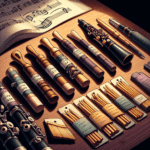The strength of your clarinet reed significantly impacts your ability to create a rich, precise tone. It affects not only your control over dynamics but also influences tone clarity, comfort, and overall playability. For clarinetists looking to improve their sound, understanding the relationship between reed strength and dynamics is essential.
What Is Clarinet Reed Strength?
Reed strength describes how much resistance the reed offers when vibrating against your mouthpiece. Manufacturers typically rate strengths on a scale from 1.5 to 5, with lower numbers indicating softer reeds and higher numbers representing harder reeds. Beginners often find softer reeds easier to play as they require less effort to produce sound. More experienced players tend to prefer harder reeds for their enhanced tonal control and accuracy.
| Reed Strength | Characteristics | Suitable For |
|---|---|---|
| 1.5 – 2.5 | Soft, easy to play | Beginners, young players |
| 3 – 3.5 | Medium, balanced | Intermediate players |
| 4 – 5 | Hard, more resistant | Advanced players, professionals |
The Connection Between Reed Strength and Dynamics
Reed strength plays a crucial role in your ability to control dynamics. Dynamics encompass the range of volume and expression you can achieve, from the softest pianissimo to the boldest fortissimo. Softer reeds may make it easier to play quietly, but they often lack the control and projection needed for more intense passages. Stronger reeds, on the other hand, allow for greater dynamic variety and precision, helping you shape your sound more effectively across different pieces or settings.
Imagine driving a car: a softer reed is like an old car with loose brakes—it works, but precise control is challenging. A harder reed, when paired with a suitable setup (like your mouthpiece and embouchure), offers the finesse of a well-tuned sports car, giving you the ability to showcase your musical versatility.
How to Find the Right Reed Strength
Choosing the right reed can be tricky. Besides personal preference, consider factors such as jaw pressure, stamina, and acoustic needs. Start with a mid-range strength like 2.5 or 3 and experiment gradually as you get a feel for what suits your style. Remember, matching your reed to your specific mouthpiece is crucial. A good pairing can make even an average reed perform exceptionally well.
Many clarinet brands, including Martin Freres Clarinets, stress the importance of using quality reeds that complement their instruments. The harmony between your instrument and reed can significantly improve your confidence and comfort while playing.
Reed Strength and Your Artistic Goals
Every clarinetist has unique artistic goals, and reed strength influences how you express yourself musically. For classical music requiring refined tonal control, a harder reed may enhance your phrasing and stability. If you prefer jazz or folk styles with brighter, freer tones, a softer reed might better suit your groove-oriented repertoire by allowing quicker articulation and less effort on staccato passages.
As you grow as a musician, your reed preferences may change. What works for a beginner might feel limiting to an experienced player, and vice versa.
Maintaining Your Reeds
Proper reed care is essential for optimal performance. Rotate between several reeds to extend their lifespan. Always let them dry completely before storing them, and use a reed case with good ventilation. Some clarinetists even fine-tune their reeds by carefully shaving specific areas with sandpaper or specialized tools to achieve the perfect balance for dynamics and tone.
A well-maintained reed can make the difference between producing a beautiful, velvety pianissimo and squeaking uncontrollably during an important performance.
When to Switch or Upgrade
Even the best reeds wear out over time. You'll notice a reed's age when it loses elasticity or feels too resistant, making smooth dynamic shifts more difficult. Regularly evaluate your equipment and adjust based on how it responds to your playing style. If you're consistently unsatisfied with your reeds, it might be time to reassess your entire setup, including your own technique.
Martin Freres Clarinets are known for their adaptability across various reed strengths, making them popular among both professionals and learners. Finding the right balance between reed strength and their responsive design can open up new avenues for artistic expression.
Tips for Experimenting with Dynamics
Want to improve your dynamic range? Try playing long tones, starting softly and gradually increasing volume while maintaining consistency. This exercise helps you understand how your reed interacts with your embouchure and how far you can push it with breath support.
Listen carefully to your playing. Pay attention to subtle changes in timbre and resistance. Getting feedback from a friend or teacher can provide valuable insights, making your practice more effective and enjoyable.
In conclusion, mastering clarinet dynamics depends on finding the right reed strength—one that feels comfortable and allows you to express your full artistic range. As you continue to refine this connection, don't be afraid to experiment and explore the possibilities each reed and clarinet pairing offers. With time, patience, and curiosity, you'll discover the unique characteristics that make every performance truly your own!







